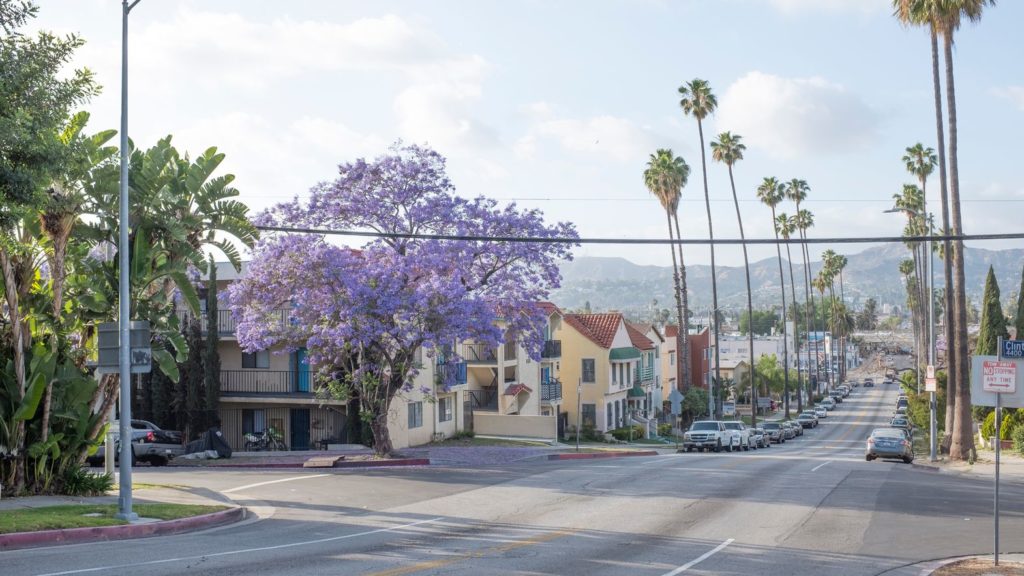The city’s urban canopy is disappearing—and new developer rules might make it worse
Curbed Los Angeles
la.curbed.com
By
The Ficus microcarpa trees along Hollywood’s Cherokee Street create a majestic arch. Walking beneath them is an almost otherworldly experience. In the impenetrable shade, as birds chirp high in the deep green canopy above, the air is unmistakably cooler.
Trees are critical for cooling down warming cities like Los Angeles, where temperatures are expected to increase an average of 4 to 5 degrees Fahrenheit by 2050.
The shade that trees produce can cool surfaces like soil and pavement. But trees can also lower the surrounding daytime summer air temperature up to 10 degrees, thanks to water evaporating from their leaves.
That’s why preserving mature trees that form a canopy should be LA’s priority, says Glynn Hulley, a scientist in the carbon cycle and ecosystems group at NASA’s Jet Propulsion Laboratory.
“It’s a pretty precious resource in cities, and you don’t want to take them down—you want to be adding to them,” he says.
/cdn.vox-cdn.com/uploads/chorus_asset/file/11488971/GettyImages_84543459.jpg)
LA’s palm trees are iconic, but they require a lot of water, and don’t create a great deal of shade.
Instead, since 2000, many neighborhoods in the LA region have seen a tree canopy reduction of 14 to 55 percent, according to a University of Southern California study published in 2017.
In recent years, the city’s street trees have taken a hit. According to permits filed with the city of Los Angeles’s street services bureau, 263 street trees—including the 18 on the 1200 block of North Cherokee—are slated to be ripped out in the first five months of this year alone for sidewalk repairs and street widening.
Those numbers are for removals of three or more trees at a time and do not include instances where one or two trees are removed for repairs, which do not require a public hearing. They also do not include permits by developers to remove one or two street trees.
“People should be climbing into these trees to stop them from being cut down,” says Hulley.
Hulley is publishing a major study this summer looking at heatwave trends in the region, which he recently presented to a Los Angeles County sustainability task force.
The many devastating—and deadly—effects of heatwaves include increased wildfire risk.
“Heatwaves are not only increasing in frequency and intensity, but also their seasonality is changing, with more heatwaves earlier and later in the year,” says Hulley. “Trees are the most cost-effective way to cool down the urban environment.”
Since 2010, the region has experienced extreme drought conditions, which not only kills trees but also makes them more susceptible to disease. But the drought is only partly to blame for LA’s recent tree loss.
After an era that saw maintenance efforts plummet and budget cuts that restructured the city’s urban forestry efforts, in recent years, more healthy trees have been removed to make way for construction or sidewalk repairs.

